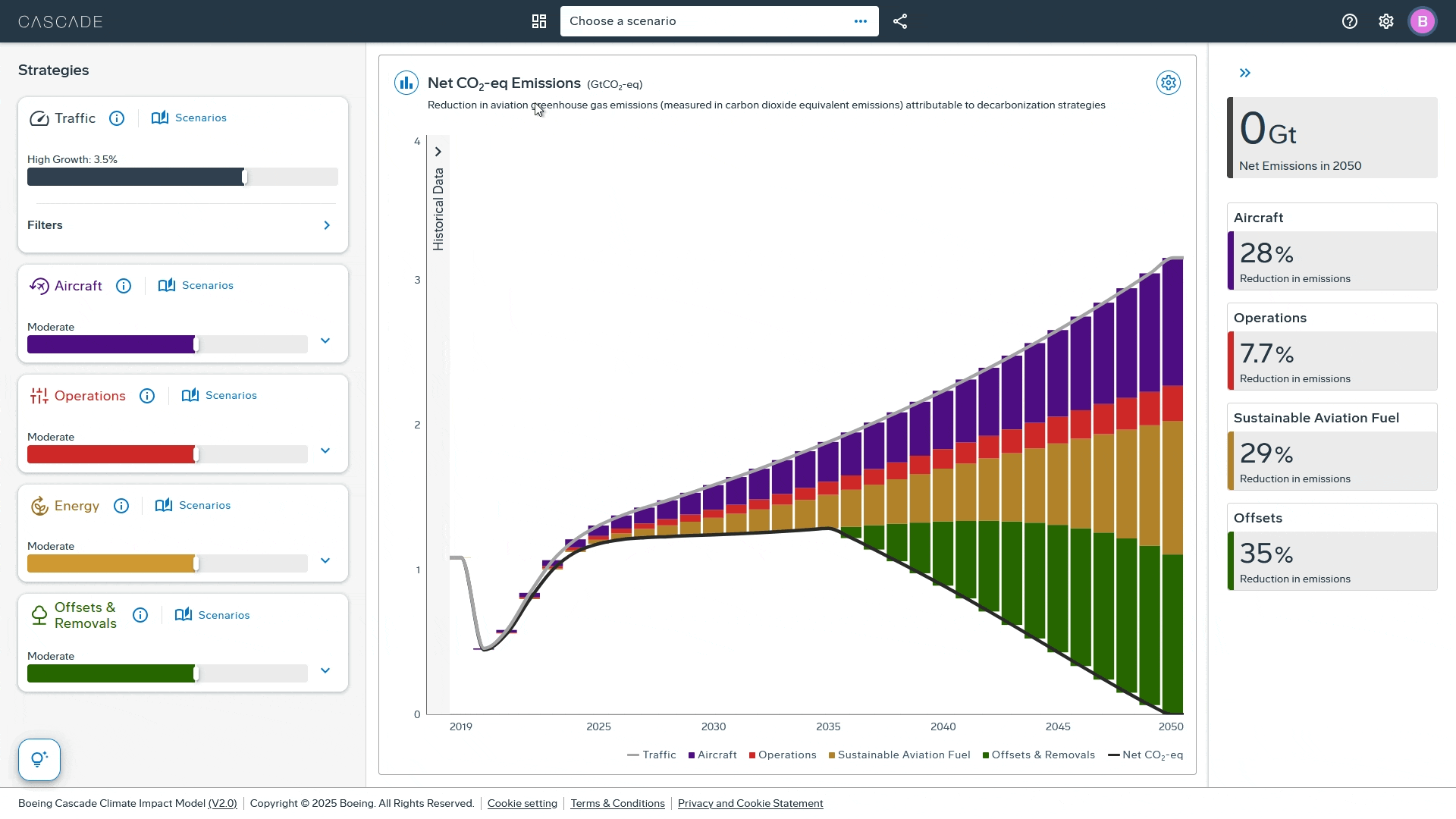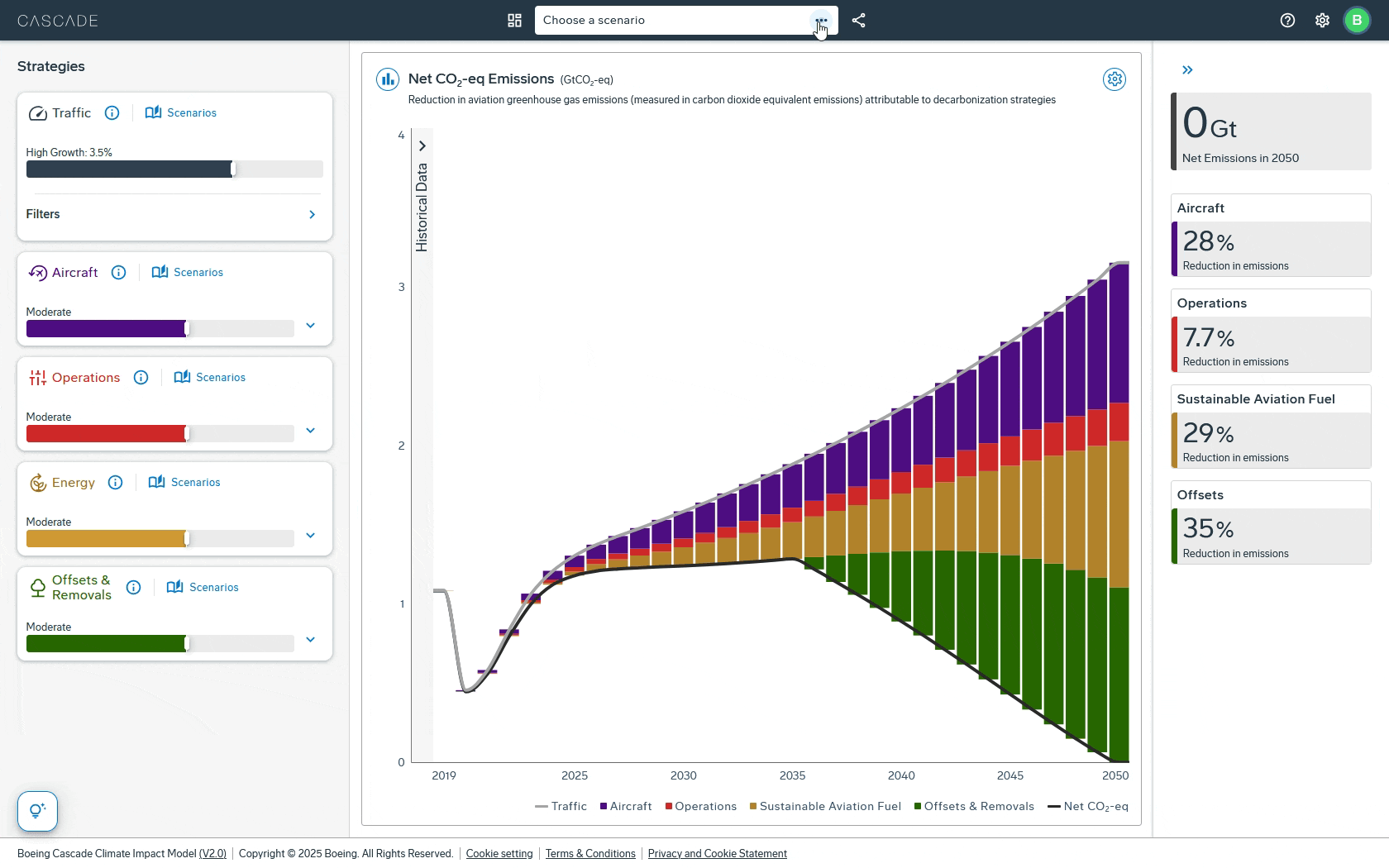Why Cascade 2.0?
Cascade puts data front and center in the conversation on decarbonization so we can focus on solutions. This “why” hasn’t changed, and we believe Cascade 2.0 offers users a more tailored and actionable experience that better reflect unique conditions found across the globe.
We are excited to launch a new version of the Boeing Cascade Climate Impact Model—Cascade 2.0—focused on helping you leverage credible data to explore foundational topics in aviation sustainability and answer the industry’s most pressing questions. This latest version is our most powerful yet, offering a dynamic way to analyze aviation’s path to net-zero emissions.
What are we releasing today?
As part of today’s release, Cascade 2.0 introduces several key enhancements to ensure it is more comprehensive, customizable and user centric.
View all of the new features here.

